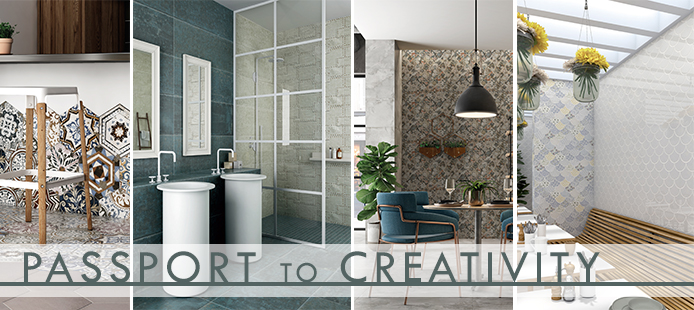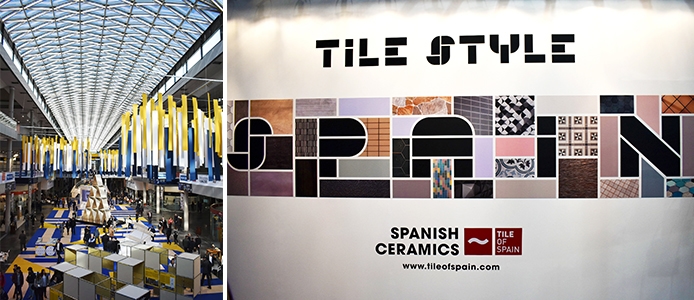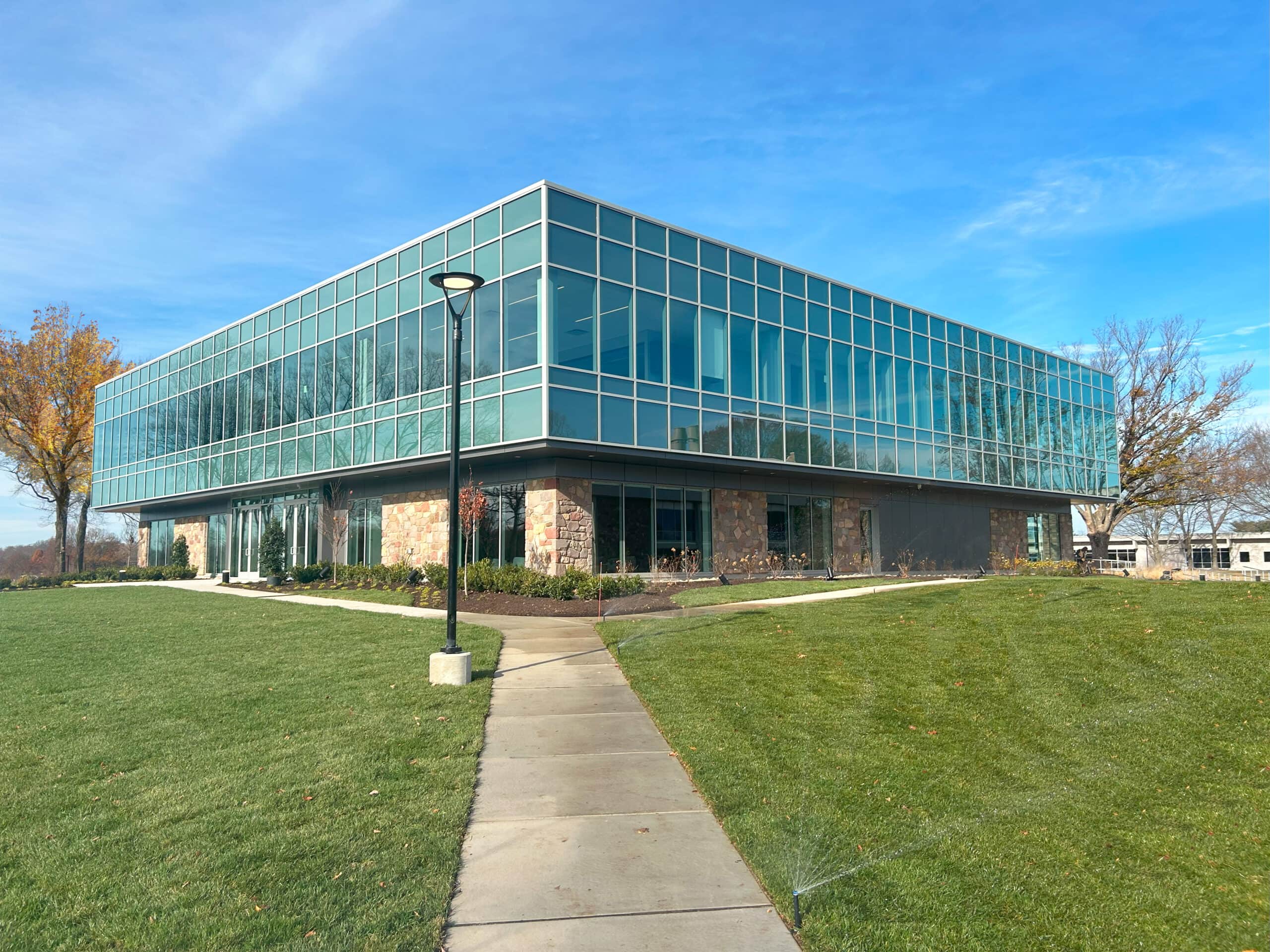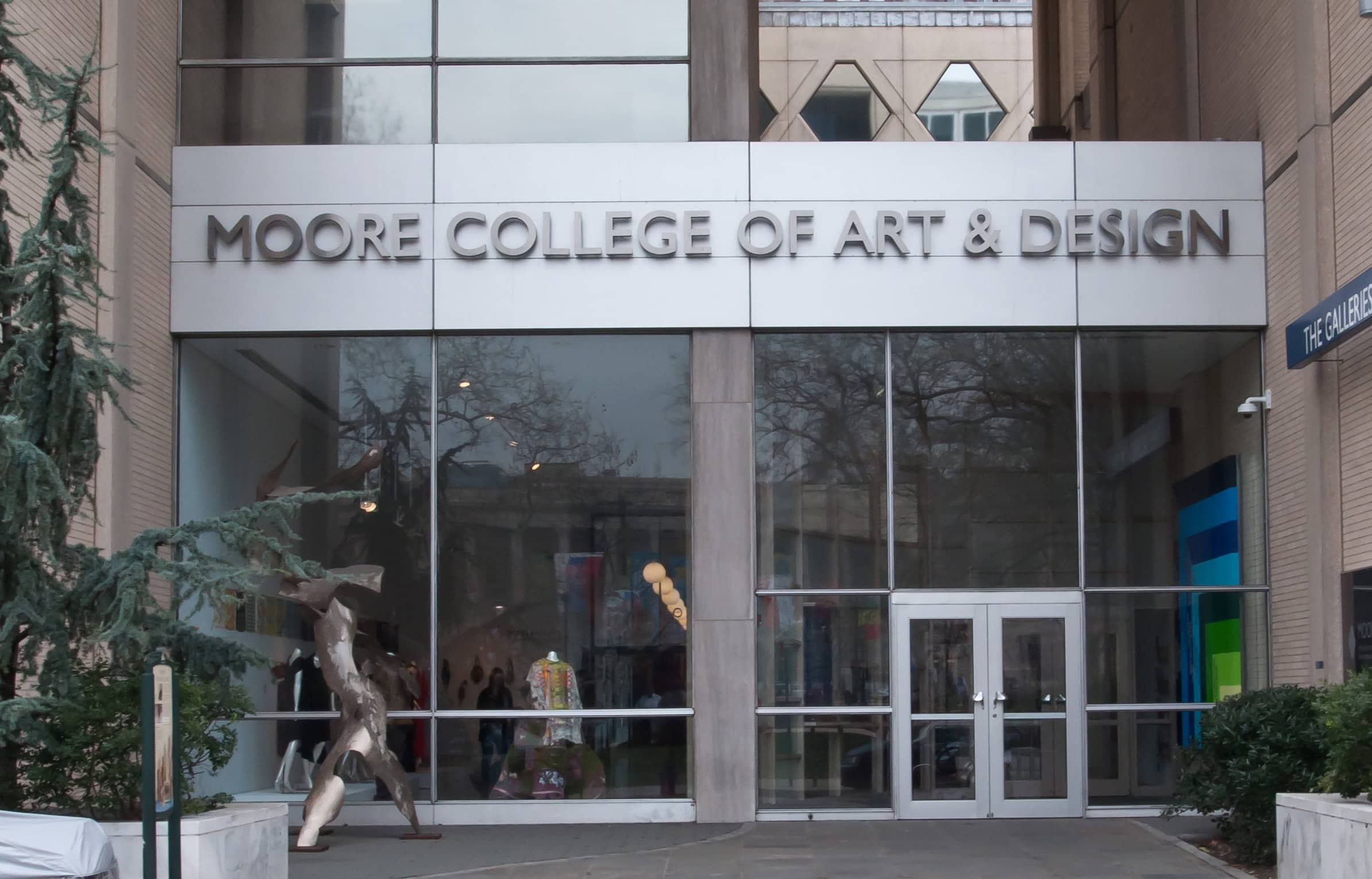
OPPORTUNITY KNOCKS
I am fortunate enough to be involved in an industry that thrives off of collaboration. Advances in the market, in technology, and in trends, all work to push us forward. At a designer showroom event in October of last year, I entered for a chance to attend the 37th edition of Cevisama, a tile trade show in Valencia, Spain with the Tile of Spain Association. Little did I think that a month later I would receive an email informing me that I had been selected! I was honored to be a guest of Tile of Spain and to spend a week with them in Valencia and Palma de Mallorca, learning about advances in porcelain tile technology and the influence from Spain on the material we see in the United States.
My first three full days of the Passport to Creativity Tour were spent in Valencia at the Cevisama trade show. With over 530 booths, 19 manufacturer tours, across two floors and five pavilions… our group saw every corner of the Feria Valencia convention center!
The sheer volume of product is overwhelming and I was glad to have a guide as we explored the new products being showcased; a result of innovative production techniques and ink technologies of select manufacturers to name a few. To summarize the entire trade show would be a longer post than I could possibly type so instead, here are my top 4 tile style trends from Cevisama 2019.

SIZE: LARGE + SMALL
Porcelain production was split toward the two ends of the spectrum, with stark size options from slabs to micro tiles that we don’t often see in the States. Smaller than a penny round, micro tiles are perceived as a highly textured field, while more familiar sizes, such as a 6 x 6 decorated with Spanish designs, are installed to create a tapestry that appears as rich as fabric. Alternatively, Spanish manufacturers have successfully implemented large format tile installation – starting at approximately 48 x 48- and are pushing the boundaries of size further still – 63 x 126 as a standard offering from many.
The slabs from Apavisa result in a wallpaper effect with its size depicting a highly detailed, organic image. Hi-definition scans are allowing the industry to not only simulate stones and minerals, but transform subject matter into artwork. Large format porcelain, manufactured in varying thicknesses, has provided a medium to be installed on the floor, wall, and ceiling.
Porcelain slabs are probably not what first comes to mind when thinking of tiles from Spain. Perhaps you imagine a traditional 6 x 6, with an intricate and colorful design and that perception is not to be pushed aside. Everyone was talking about the return of the small format tile, and while I don’t see that trend in my day-to-day projects, there is something alluring about the saturated hues and traditional shapes. 90% of the glazes used by Equipe are still produced in Spain and the tones evoke a very different feeling than their large format counterparts. The smaller format isn’t exactly limited to a square either – Cevica produces several small format tiles in a variety of shapes to create patterns instantly recognizable.

MASTERING METAL
The porcelain industry has succeeded in creating visuals for natural stone, it has conquered concrete and now, it is tackling metal. The character of aged metal is being transformed by glues and metallic inks into porcelain works of art. Less about scale, porcelain is playing with metal looks in a variety of ways.
Utilizing differing thicknesses, Aparia plays with GRUNGE and provides a variety of mediums to illustrate how distressing the visual surface, as well as the physical, adds depth to two materials that can read quite cold.
With FOUNDRY and ALCHEMY 7.0 – two lines from Saloni and Apavisa respectively – a water color effect of aging passes over the installation to create a cohesive whole from individual pieces that each possess a distinct level of variation.

PRINT TECH
Tied in first place for the most eye-opening introduction to my own tile knowledge on display at Cevisama was the application of new print technologies. Temperature adjustments and multiple firings, sinking inks to create tactile effects, and the application of glues all add to a new visual dimension available by porcelain tiles.
I was surprised to learn how many of these visual effects are actually achieved by multiple firings – either at the same temperature or varying temperatures. Apavisa and Saloni both utilize these firings to create beautiful visual dimension. A step past the visual, sinking ink – utilized by manufacturers such as Tau and Keraben – is used to create physical dimension, such as veining, in an image of marble.
The culmination of these technologies was evident in the two FLAMINGO installations by Bestile. The result of three jets and one firing, FLAMINGO was a beautiful example of seeing three different effects – gloss, luster, and glue – all in one piece.
DIMENSION
In addition to new print technologies, the physical dimension of porcelain was the most surprising takeaway from the show. With the introduction of porcelain slabs, I am beginning to see greater solid thicknesses of porcelain being used for countertops, in addition to exterior pavers. Past this aspect of functional application, porcelain is also challenging thickness with variations in surface texture. Whether it is a pressed relief or an extruded tile, porcelain is changing how I see ‘everyday’ tile.
Shallow reliefs whether organic, such as my favorite example from Casa Infinita, or Rocersa’s use of geometry, add a subtle elegance to what would otherwise be a solid color wall tile. This method of introducing form feels less trendy than simply changing the shape of the tile itself.
Though it is Natucer that truly challenged my perception of dimension with their extruded tile, adding a bevel in two directions. This technique, along with their use of “chamotte” – fired recycled product mixed with virgin clay to make a stronger final product which cannot be used with pressed clays – was a truly new process that I had not yet heard of.

TRADE TAKEAWAYS
I could have spent many more days and countless hours wandering Cevisama, collecting as much information as I could possibly take note of and push, not only my own design, but also to challenge how my industry currently views limitations of porcelain. As exhausting as walking the floor of a trade show can be, it is only the physical exhaustion that holds me back- my curiosity for production, application, how it is made, how it works – drives my love for what I do. Some may see ‘window dressing’- the stuff that comes “after” – but I see and feel a space and see importance in how those materials are engineered, produced, and perform. Cevisama, not just a design convention but a challenge to my personal design process, is an experience I hope to repeat in other areas of my field.
UP NEXT ON THE TSP BLOG
After leaving Cevisama, the next stop on our Passport to Creativity Tour was a tour of the Neolith factory – the leader in sintered stone manufacturing – to learn their process of producing pressed slabs. Stay tuned for an upcoming blog post right here on the The Sheward Partnership blog!
Written by Maegan Sweeney, NCIDQ, LEED AP ID+C, IIDA
Designer | Sustainability Specialist






